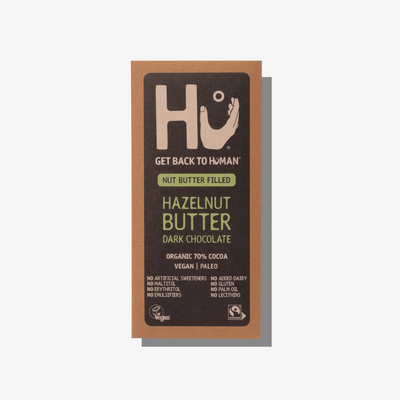Recently across social media, cold plunges have taken the health and wellness sector by storm. Although various cultures have historically used cold water as a cryotherapeutic practice for thousands of years, cold plunges have risen in popularity a lot recently. The question is, are cold plunges actually good for you and what sort of benefits do they provide?
Sports medicine has utilised cold water therapy for years to aid in the active recovery of athletes’ muscles. While plunging into freezing cold water does not sound the most appealing, studies have found that cold plunges have numerous physical and mental benefits.
At healf, we believe that health and wellness should be looked at from a holistic picture with Eat, Move, Mind, and Sleep as our main four pillars. While cold plunges have become a recent popular trend, the technique is historically backed with lots of benefits. In this article we have broken down all aspects of cold plunges from what it is, how it works, the benefits, and how to cold plunge.
What is a cold plunge?
Cold plunges, also known as water immersion, can be in the form of jumping into the ocean, taking an ice bath or a cold shower, or using professional circulating cold tubs often found at luxury spas and fitness centers. Jonathan Leary, founder of the popular health and wellness club Remedy Place, describes a cold plunge as “the act of submerging your body into cold water for an extended period of time. Cold plunges are an incredible tool for boosting the health of the body and mind.” The water should be 15 degrees Celsius or less.
Most people attribute cold plunges as a great way to boost daily energy. Lots of evidence suggests that hormone imbalances can contribute to depression, but cold plunges may help reduce depression and help improve overall mood.
How do cold plunges work?
Submerging yourself into cold water causes your blood vessels to constrict, which is called vasoconstriction. When your blood vessels contract, they push blood toward your organs supplying your blood with more oxygen and nutrients.
Once you get out of the cold water, your blood vessels open up, which is called vasodilation. This allows oxygen and nutrient-rich blood to return to your tissues to help remove waste products like lactic acid buildup.
The benefits of cold plunges
The benefits of cold plunges come from decreasing your core body temperature. When you do cold plunging a few times, your mind builds mental discipline and resilience to the consistent exposure to cold temperatures. By allowing your mind to learn how to get comfortable in a state of discomfort it will help you improve your ability to deal with other types of stress.
Often cold plunges have been used for athletes to aid in muscle recovery or to boost energy, but there are numerous other benefits in addition to those historical uses. These benefits include:
- Decrease inflammation
- Offer a huge rush of endorphins
- Spike dopamine
- Improve sleep and mood
- Reduce stress
- Help remedy aches and pains
- Boost injury recovery
- Reduce swelling
- Potentially increase testosterone
- Promote lymphatic drainage
- Regulate hormones
- Accelerate metabolism
How to cold plunge
Water for cold plunges can range between 0 to 15 degrees Celsius, but ice baths typically incorporate water that is cold enough for ice to form around 0 degrees. If you have never plunged before, start with “warmer” water temperature around 12 degrees. Start with short periods of time plunging between 1-2 minutes, and then for each cold plunge gradually increase the amount of time as your body adapts to the cold. If you start to excessively shiver, that is an indication you have reached your limit.
How long you are able to plunge for depends on what you have done during the day. The more exhausted your body is, the less time you will be able to spend cold plunging. The most important thing to remember is to listen to your body. When you get into the water, oftentimes people hyperventilate. Instead, focus your energy on slowing down your breathing in order to get the most benefits from your cold plunge.
For how often to cold plunge, some people cold plunge daily but it is more ideal to create a routine. You can do three days per week for the first few weeks and see how your body reacts. Afterwards, you can create a routine that fits best with your lifestyle. Recent research suggests that 11 minutes a week of being fully submerged is ideal.
You can also plan what time of the day you want to cold plunge based on your health goal:
- Early morning: boost of energy
- Pre-workout: get blood pumping before a workout
- Post-workout: speed up muscle recovery
- Afternoon: relax and downregulate sympathetic nervous system
- Evening: fall asleep quicker and improve quality of sleep
While cold plunging is easily accessible and has lots of health benefits, not everyone should try this wellness technique. Those who should not cold plunge include:
- Individuals with cardiovascular disease or hypertension
- Individuals with Reynaud’s syndrome
- Individuals who are pregnant
- Individuals with high blood pressure, heart disease, or other circulatory problems
- Individuals who have low body temperature at baseline
- Individuals who have a pacemaker (unless they have any medical clearance and/or direct medical supervision)
Conclusion
Cold plunging, aka water immersion, is a recent popular health and wellness trend that is backed historically with numerous health benefits. Whether it is in the form of a cold shower or going into the ocean, cold plunging can be easily incorporated into your wellness routine.
If you are looking to start incorporating cold plunges into your routine, here are some products we recommend to aid in your specific health goal:
















